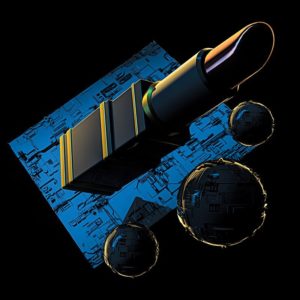28 August 2019 (Serifos, Greece) — WOW! My science fiction listserv has grown to 566 members since I started it two years ago. Before I disappear off the grid for a few weeks, one last installment.
I met Marissa Lingenon on Twitter. She runs a blog which contains (most of) her writings. She had me with her two-sentence biography: “Marissa Lingen is a freelance writer who lives in Minnesota with two large men and one small dog. True but not perhaps optimally illuminating.”
Enjoy.
How we know they have faces
More than a cosmetic fix.
Marissa Lingen
Addition and subtraction were fine. The existence of prime numbers and elemental hydrogen: no problem. But there we got stuck. We knew the Ophiuchans were thinking, probably feeling, entities. But what they were thinking about, beyond the mass ratio of the proton to the neutron, kept eluding our grasp.
It didn’t help that they lacked bilateral symmetry, that their long stalks with blobby appendages appeared to human eyes to be distributed totally randomly. They clearly had some form of sight and hearing, but it was hard to tell how or with what. Talking to them about electrons was exhilarating at first. Trying to talk to them about anything else had so far been impossible.
Sharon Kee was exhausted. She had been working in the quarantine zone for months, attempting to communicate with the Ophiuchans on anything more than a mathematical level. Her hair bore their ketone reek even after she showered; her dreams were tinged with their gurgling, never resolving into a recognizable opinion.
She found it impossible to believe that any intelligent species would only ever think of the most basic blocks of the physical world — even if another race had engineered them, keeping a being complex enough to think about physics from also thinking about anything else felt impossible.
But they were aliens. Maybe that was what alien meant.
A long morning of seemingly random, inconsistent alien responses to a dozen things had left Sharon hungry as well as tired. She took out her lunch box and ate rice and pickles. No reaction from the Ophiuchans, from even one of their blob stalks atop long wobbly necks to their terrifyingly numerous mole-coloured toenails.
She pulled out her lipstick, absent-mindedly refreshed it, and put it back in her purse.
Every Ophiuchan swivelled to point blob stalks at her.
“… Do you … like the colour?” Sharon blurted, forcing herself to breathe evenly. It was a blossom pink, not too garish for work — not, to be fair, one of her favourite lipsticks, blander than she liked on her own time. But the Ophiuchans were mesmerized.
The blobs loomed closer and closer to her face: one Ophiuchan had taken point. She gulped in air, stifling her gag reflex at the overwhelming acetone scent. She groped in her purse for the lipstick, not wanting to stop looking at whatever part had apparently engaged them.
The brave Ophiuchan waited until she’d taken the cap off and turned the base to extend a stalk, then the blobs seized the lipstick firmly. The Ophiuchan slithered and reared back a body length and then quickly, deftly slashed lines of lipstick across what looked to Sharon like random contours of neck.
“Yes,” she managed. “Gorgeous.”
It handed the lipstick off to the next Ophiuchan, who made very similar markings. And the next.
The last of them leant down to the chamber floor and made the dot and line symbol they had managed to agree upon for hydrogen.
Sharon’s freshly lipsticked mouth worked soundlessly for a moment, her eyes wider than any liner could make them look artificially. “Leslie!” she shouted at the lab tech outside the chamber. “Leslie, bring your handbag in here, quick!”
Three months and enough cosmetics to stock an entire city’s worth of drugstores later, they were starting to make progress towards an actual conversation. Sharon’s supervisors — most of them male — had taken a great deal of convincing that using different shades of lipstick, different palettes of eyeshadow, conveyed any meaning beyond the random. But the symbology used with each colour was not, after they ran tests, correlated with its chemical composition.
It was astonishing what a line you could draw if you had the two points of physical constants and aesthetic preferences.
Sharon prepared herself for the latest talk show that wanted a scientist presence to discuss what they had managed to figure out about the Ophiuchans and their minds. She yearned for the day when communication had progressed enough that they could just send Ophiuchans to speak for themselves … but that would be years, maybe decades yet, and anyway, having a human counterpoint was something humans liked.
Sharon was surprised to find herself optimistic about figuring out what kind of publicity Ophiuchans liked. She might even brave the fog of ketones to find out in person.
In the meantime, she peered in the studio mirror, carefully applying strokes of paint to her neck in smooth curves that reflected nothing about what her body actually did in those places.
It seemed more and more that Ophiuchans looked for the aesthetics in any situation. As for humans — they looked for the opportunities for pack bonding. The trend for neck painting had become more sophisticated, or at least more commercialized, than when the first teenage girls on the Internet used lipstick to replicate the signs of Ophiuchan beauty as best they could — there was less wax in the neck paint, more of a gloss.
The Ophiuchans did not seem to be mirroring human appearance in any way humans could parse. There were no false mouths on their trunks, no attempts at lining eyes where they had only undifferentiated receptors.
But they had started making the same pitches of soothing noise as Sharon and the team did, buzzing at each other, “Grrrgzzzzz, grrrrgzzzzz.”
Smell aside, Sharon had known much worse.
